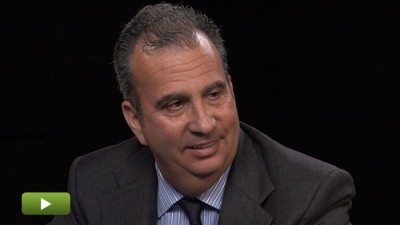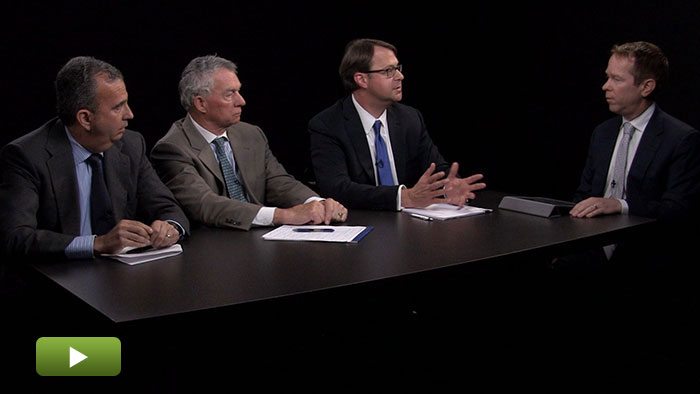Structuring a Solid GP Management Company
New private equity firms looking to raise their first fund have several potential barriers to success. In this final video of a three-part series, experts from Proskauer, Eaton Partners, and Gen II Fund Services discuss how the terms of the fund are distinct from the terms of the “upper tier” GP entity, whether LPs care about this upper tier, and administrative complexities that can come into play.
Transcript Download Transcript
Structuring a Solid GP Management Company
First-time Fund Formation
David Snow, Privcap: Today, we’re joined by Steve Millner of Gen II Fund Services; Charlie Eaton of Eaton Partners; and David Tegeler of Proskauer. Gentlemen, welcome to Privcap. Thanks for being here. We are talking about fund formation, specifically with regard to first-time funds. Let’s start with a question for David Tegeler from Proskauer: what is distinct between the terms and conditions of putting the fund together versus the management company that oversees it all?
David Tegeler, Proskauer: Your typical structure involves the fund, which is being raised and has limited partners invest in it. The fund has a general partner entity, which receives the carried interest and is also the vehicle through which the principles make their commitment to the fund. There is also a management company, which is a limited–liability entity through which the organization is run. The employees are hired, the rent is paid, the telephones are rented and [it] receives all the management fee from the funds. People often come to us and want to raise a first-time fund; their key focus is the fund itself and their relationship with the LPs and offering that vehicle.
We often ask them to take a step back and [we] explain to them that these upper-tier entities, the general partner entity and the management company are crucial in terms of the personality of the organization. Because those are the entities where you decide how the carry is split up among the principles, how investment decisions are made and how key decisions regarding the organization are made. Especially for emerging managers, many of the people coming in to these organizations have left other firms because of governance issues or disagreements at their prior location. So, they come in with strong opinions about what their firm should be like. And the GPs really need to [know], in the immortal words of Pete Townsend, who are you?
Snow: In many cases, a new firm will bring in an external investor, sometimes called a “cornerstone” or “anchor” investor, to help them get to the starting line of running their own private equity firm. What kind of complexities does that introduce when there is a third-party investor in not only contributing capital to the fund but, in many cases, taking a stake in the management company?
Tegeler: From the limited partners’ perspective, control by the fund managers is paramount. Often, when anchor investors come into a upper-tier entity, be it the management company or the GP entity in connection with their bargain for being an anchor investor, they would like to have a seat in the investment committee, a voice in management or some sort of a vote in the future of the firm. If you bargain for that and you give that to an anchor investor, limited partners might be concerned about whether the fund managers are really calling the shots and making the investment decisions.
Snow: Charlie, have you seen circumstances where the bargain between the founders of the firm is not properly structured and that has led to perceived challenges from the LPs and real challenges down the road?
Charles Eaton, Eaton Partners:
If there is too much power being given to the outside anchor investor, I think investors want to know what they are bringing to the table. Is it just capital or are they able to provide some deal–sourcing to the GPs? And have you given too much of the shop away to get that capital? All that has got to be really carefully thought through and negotiated. The lawyers, the administrative assistants and the placement agent can all opine and help make sure it’s properly aligned and not overly done. We have had instances where the GPs have given away way too much before they got involved with us. And we’ve just told them, “That’s…going to be a non-starter in the marketplace.”
Snow: How about the terms between the founders themselves, even if there is not a third-party investor? What are some examples of an unstable set of circumstances at the upper tier where you can foresee problems down the road?
Tegeler: One of the things that LPs examine at the upper tier is the dynamic between how much carry an individual principal is receiving and how much of a commitment they’re making to the fund. Investors like to see a significant amount of your personal net worth invested in the fund if you’re a principal. If you’re receiving a significant amount of carry, but you’re not putting a comparable amount of capital into the fund, that could create an alignment-of-interest issue with respect to the principals and the LPs. Another feature that often comes up is that these funds are formed as pools where the carried interest is calculated based on net returns. But sometimes at the upper tier, principals are compensated based on individual deals they worked on, as opposed to deals as a whole in the fund. That also can have a misalignment of interest between the principals in the fund.
Eaton: Sometimes the inverse is true, because if the carry is only going to those who put up the GP capital, some of the really good producers to that fund or really good investors might not have had the wherewithal to put a lot of capital up. It’s not necessarily an alignment of interest that is good for the investors, the LPs, if the carry is only going to those who put up the initial capital. If you’re bringing more to the party than just capital and maybe you didn’t have that much capital to put up, you still want part of the carry and the investors want to see who gets the carry and why.
Snow: Steve, I’m going to guess that making sure the calculation of returns and the accurate flow of capital to the right people in the right entities is something LPs care quite a lot about and care about getting right, correct?
Steven Millner, Gen II Fund Services:
Everybody cares that they’re getting the right share of a return. The challenge often times can be at the GP level—that upper-tier entity—where that was a negotiated deal. I can tell you no two are the same. That’s where you really get complications. The split between the GP and the LP, market standard—you’re going to get to a 20% carry. But, then, where do those carry points go?
Tegeler: I have one key piece of advice for anyone thinking of forming a first–time fund when we’re thinking about these upper-tier entities. That is, the first thing you do should be to form the management company because you need a limited-liability entity out there to sign contracts and to make or start off operations. If you’re doing it as an individual, it’s very dangerous from a legal standpoint.





